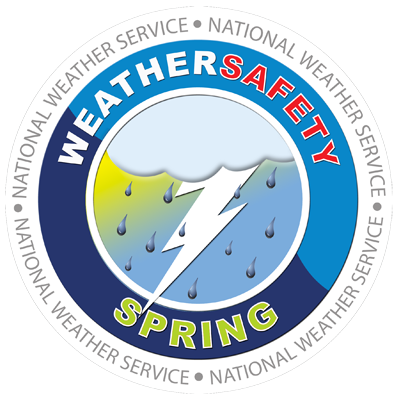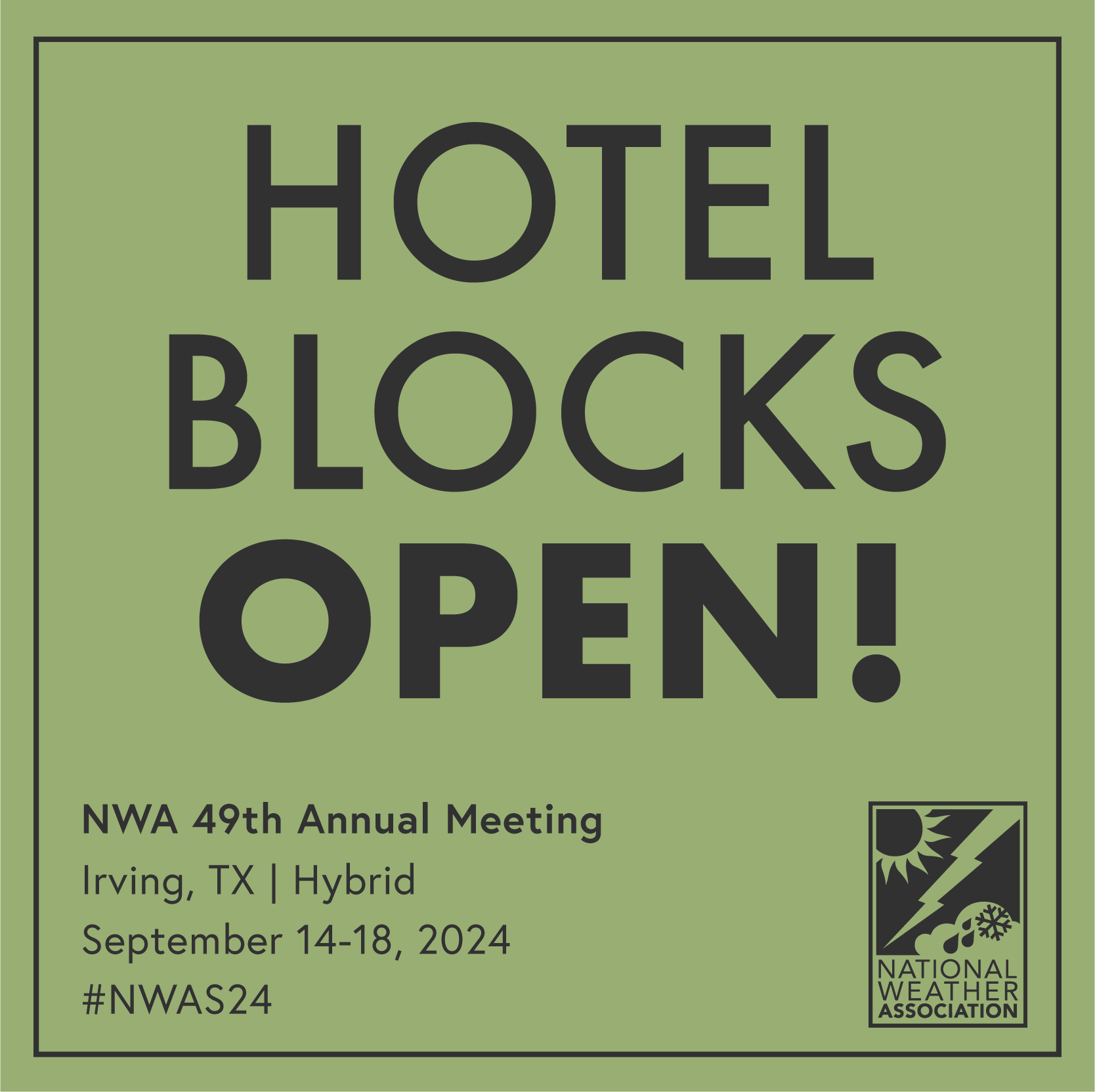President's Message
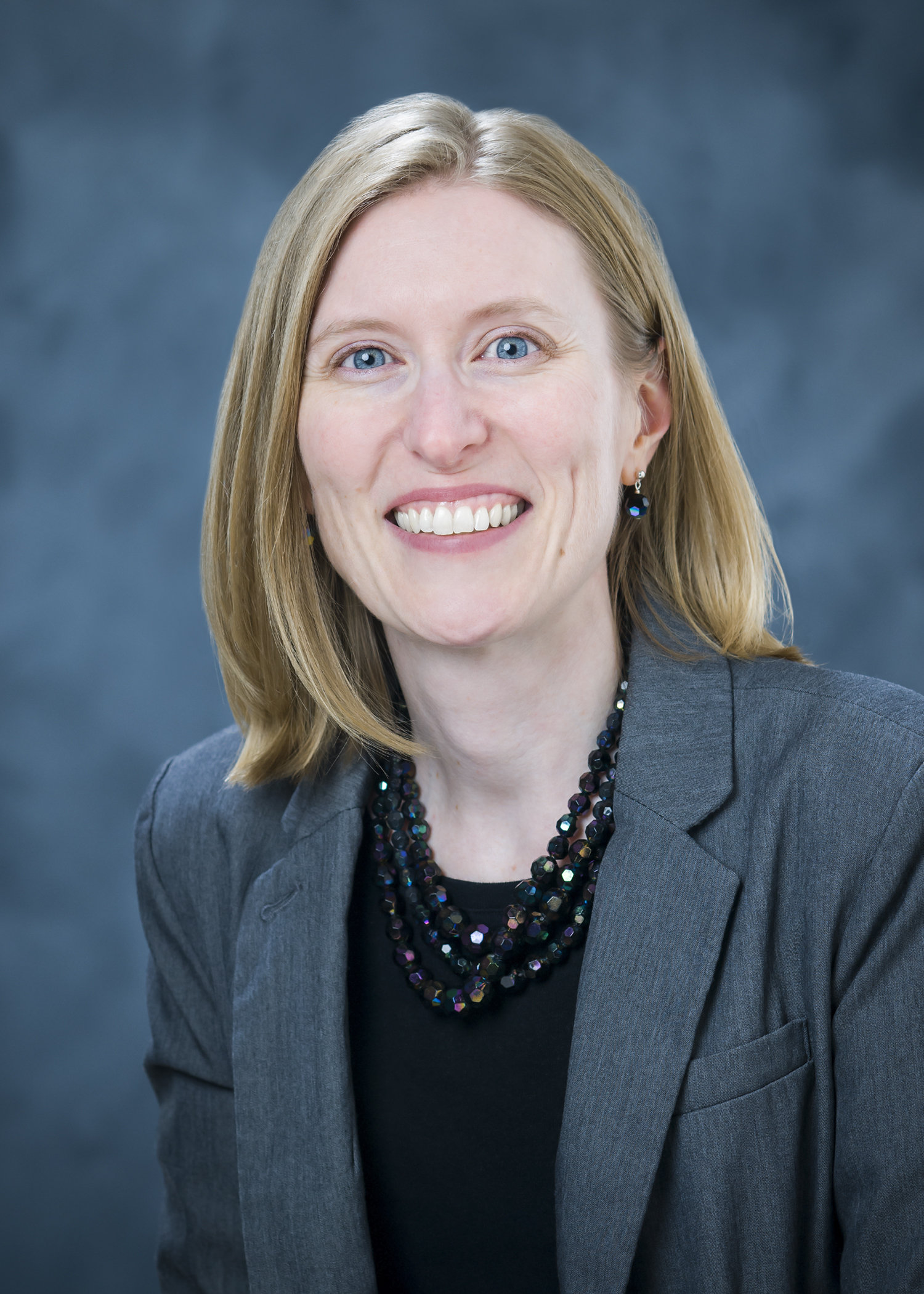 I mentioned in my January message that I am a social scientist. I thought I would use the president’s message this month and next to talk a little bit more about social science. Coming up first--what a social scientist is and why meteorologists should care.
I mentioned in my January message that I am a social scientist. I thought I would use the president’s message this month and next to talk a little bit more about social science. Coming up first--what a social scientist is and why meteorologists should care.
First off—I know that a lot of meteorologists are genuinely interested in social science topics. Lots of our annual meeting sessions have some component about warning communication or discussion about how people respond during a weather event. More quantitatively, I conducted a survey of NWS warning coordination meteorologists a few years ago and found that over half (32 out of the 61 who responded) thought there should be more social science incorporated into NOAA. Only 8.2% believed there was too much attention given to it.
Social science is a broad term that encompasses many different disciplines. Academic disciplines can be classified into a small number of groups (the number varies depending on who is doing the grouping); for example: the humanities, STEM disciplines (science, technology, engineering, and math), and the social sciences. But the groups are far from distinct. My own discipline of geography is a good example. Depending on your emphasis area, you could easily consider your area more a physical science, social science or humanities discipline.
Some disciplines within the social sciences blend into others. For example, human behavior can be studied by anthropologists, sociologists, psychologists, geographers, and others. Each discipline will have its own theoretical assumptions, common ways to investigate research problems, and common topics for study. Participant observation and controlled experiments are two very different ways to study a problem, though you could probably find examples of both being used to study a similar topic. Participant observation would be more likely to be practiced in anthropology or sociology while controlled experiments would be more common in psychology or communication. Until fairly recently, disciplines operated very much independently, but interdisciplinarity is needed to make progress in understanding some of the most complex issues.
I’ve participated in different efforts to bring meteorologists and social scientists together. Some of you reading this may (along with me) be an alumnus of the Weather and Society Integrated Studies (WAS*IS) program, an early effort to bring social scientists and meteorologists together to learn from each other. The NOAA Vortex Southeast project is another example of a program that includes both meteorologists and social scientists to pursue its goal of reducing harm from tornadoes. Based on the desire of the weather enterprise to keep people safe in extreme weather and use a readily available way to achieve that goal (better warnings), social science often gets equated with two disciplines that have the most obvious connections to meteorology—communication and psychology. However, there are so many other ways social science can converge with meteorology.
NOAA is part of the Department of Commerce, which has in its mission to support the economy. NOAA’s office of the Chief Economist published a summary of the many ways NOAA products benefit the economy. A 2011 study also showed that about 3.4% of the U.S. economy is sensitive to weather variability, and the percentage is as high as 13.5% in states. Weather has been linked to all kinds of outcomes or events such as human health and mood, crime, stock market performance, voter turnout during elections, and energy pricing. There is a lot that social science has revealed about the way humans think or act that can be useful knowledge for meteorologists. And different social science disciplines may be better positioned to examine issues that intersect more directly with their fields. As I continue this topic in next month’s newsletter, I’ll provide some examples of research findings relevant to meteorology in the area I study.
Before I sign off for another month, I also wanted to encourage everyone to think about nominating someone for an NWA award. There are many great people in our organization who are deserving of being recognized. It takes a little effort on the part of the nominator, but it can really make someone feel valued. Nominations close April 13.
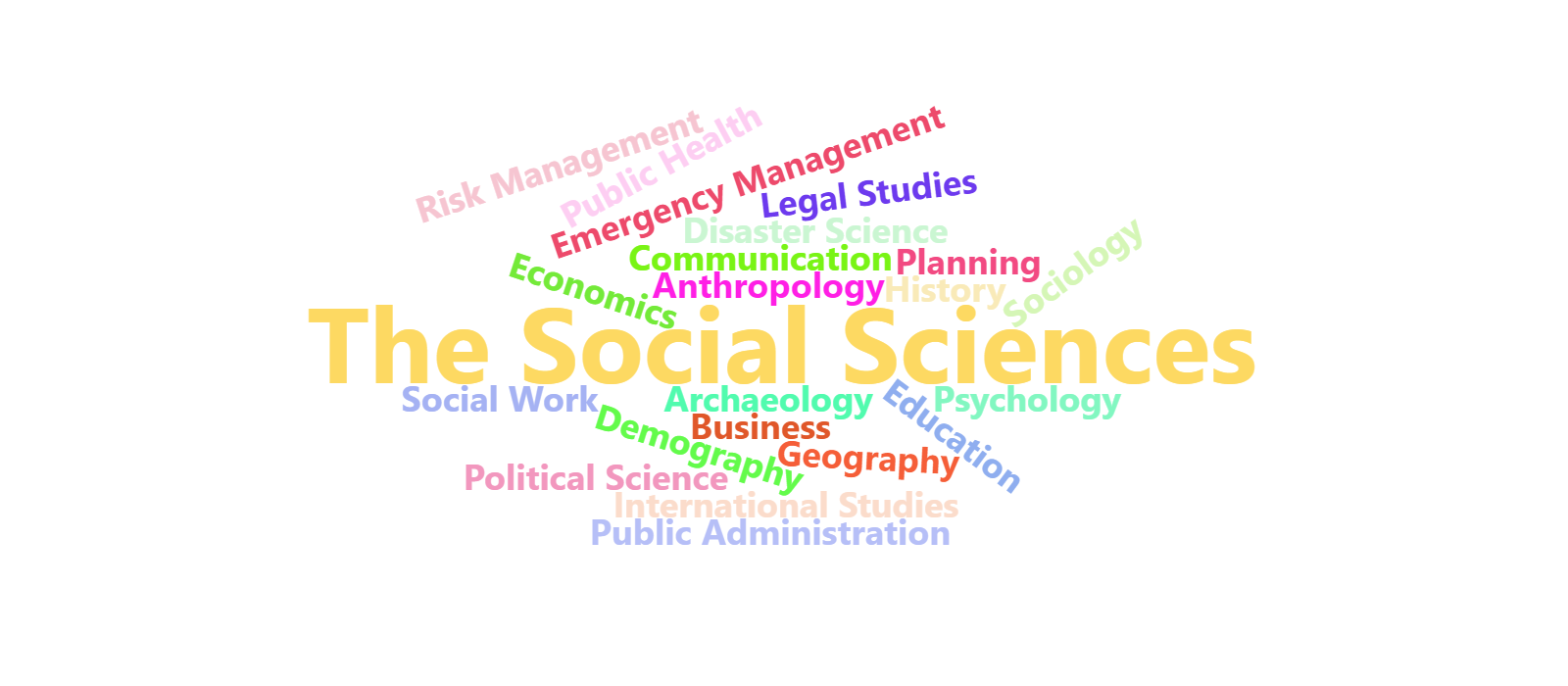
Return to Top
Call For Abstracts
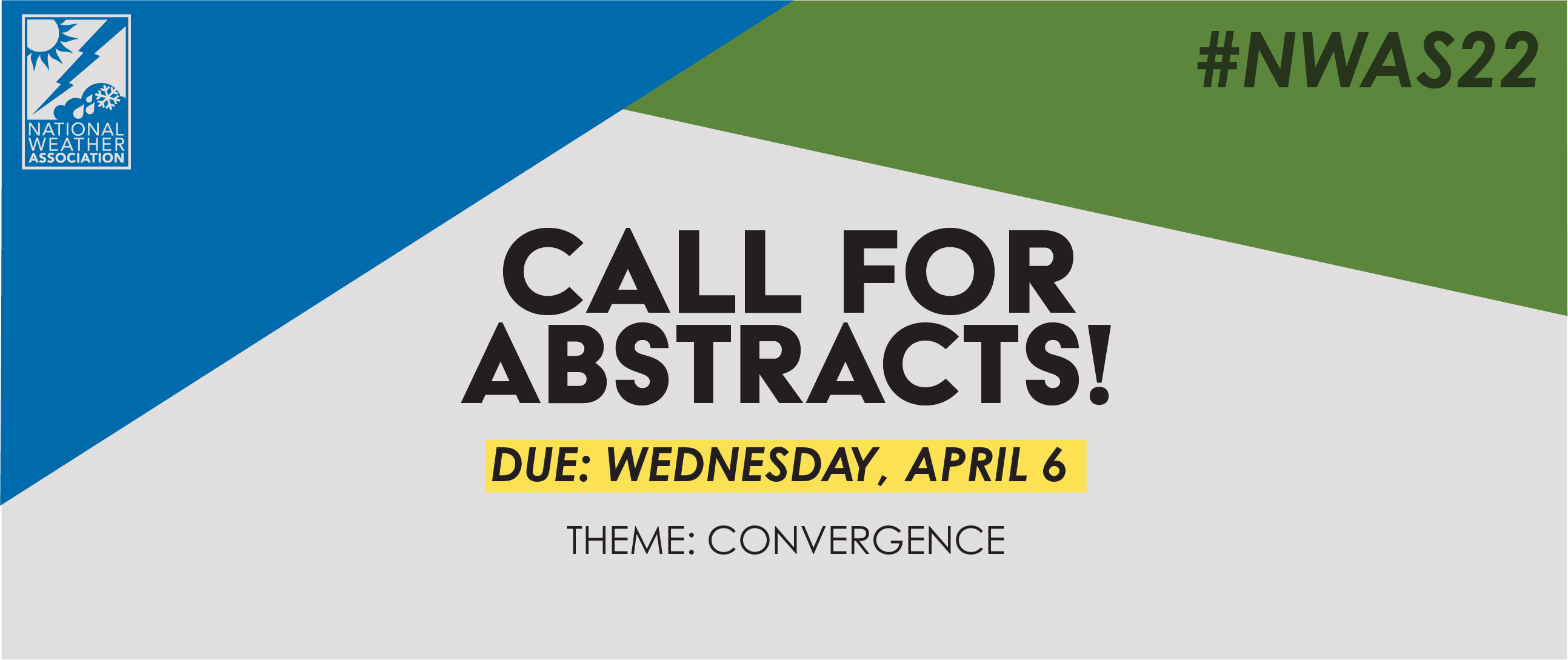
The NWA 2022 Annual Meeting Call for Abstracts is open through April 6 through 11:59 PM CT.
Click here to go to the Call for Abstracts Page.
Return to Top
Student and Early Career Speed Mentoring April 6

WHAT: Virtual Speed Mentoring
WHO: NWA Student and Early-Career Professionals
WHEN: Wednesday, April 6, 2022 | 7-9 PM ET
WHERE: Zoom, REGISTRATION REQUIRED.
Click here to learn more about this event.
Return to Top
NWA Awards Nominations: The Power of Recognition
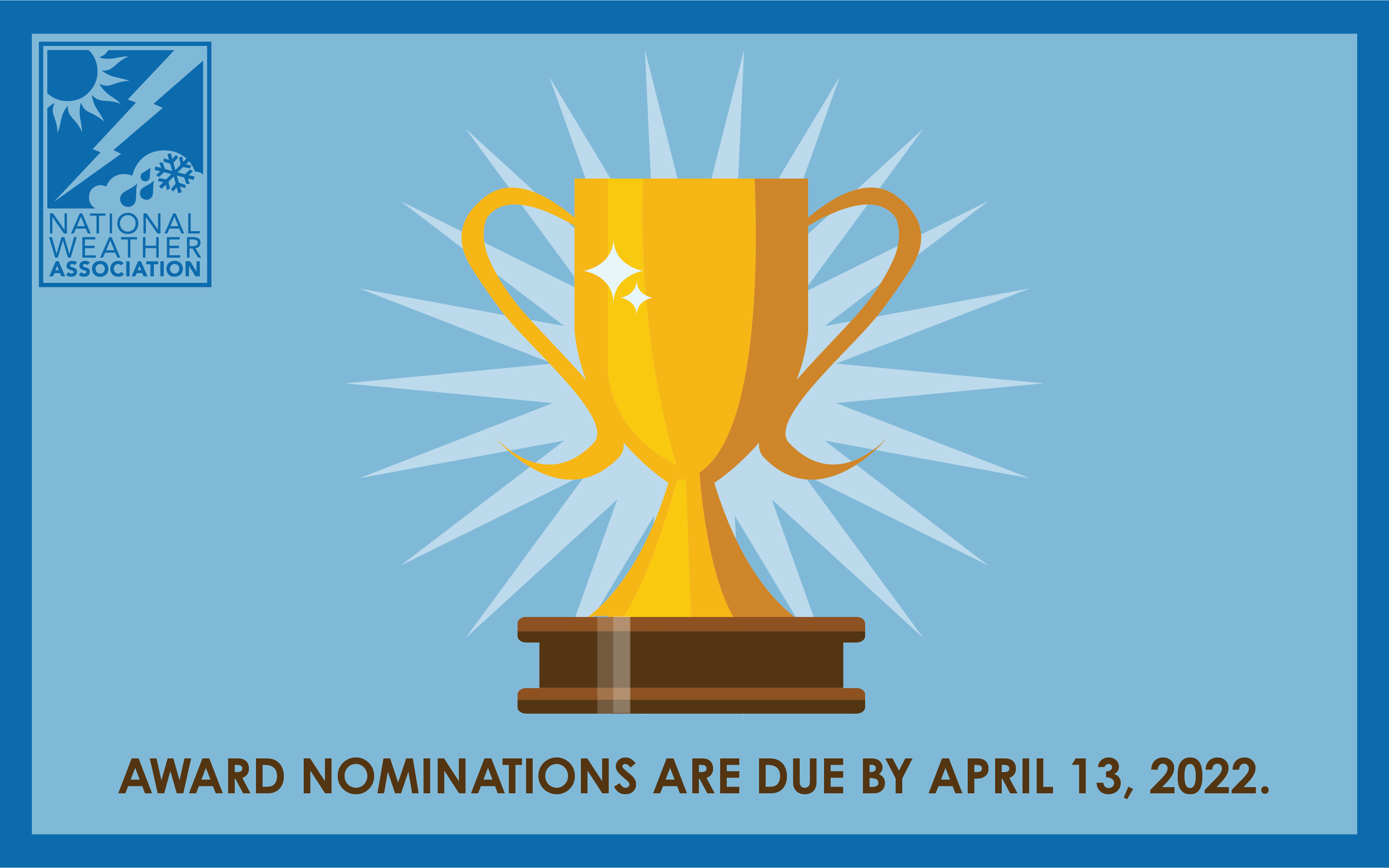
Those of us fortunate to have received an award in honor of our meaningful, dedicated work understand the powerful motivation this recognition can bring to our professional and personal lives. Being able to share that sense of encouragement to our valued friends and colleagues can be as inspiring for the nominator as it is for the recipient. The NWA believes in highlighting and celebrating individuals, teams, and organizations whose outstanding efforts in meteorology and related sciences deserve special recognition. NWA members are invited to use the NWA Annual Awards nomination process to recommend those who should be honored for their work at the 2022 NWA Annual Meeting in August. The NWA Annual Awards Program helps bring awareness to all the ways that representatives of the weather enterprise inspire innovation, collaboration, and the promotion of weather awareness. There are 15 awards spanning research, operations, and academics. The nomination process is simpler than you may realize, and we encourage you to review information provided on the NWA Annual Awards Program webpage. Nominations are due by April 13, 2022. If you have any questions, please feel free to contact the Awards Committee at [email protected] or [email protected].
Return to Top
Spring Scholarships Open
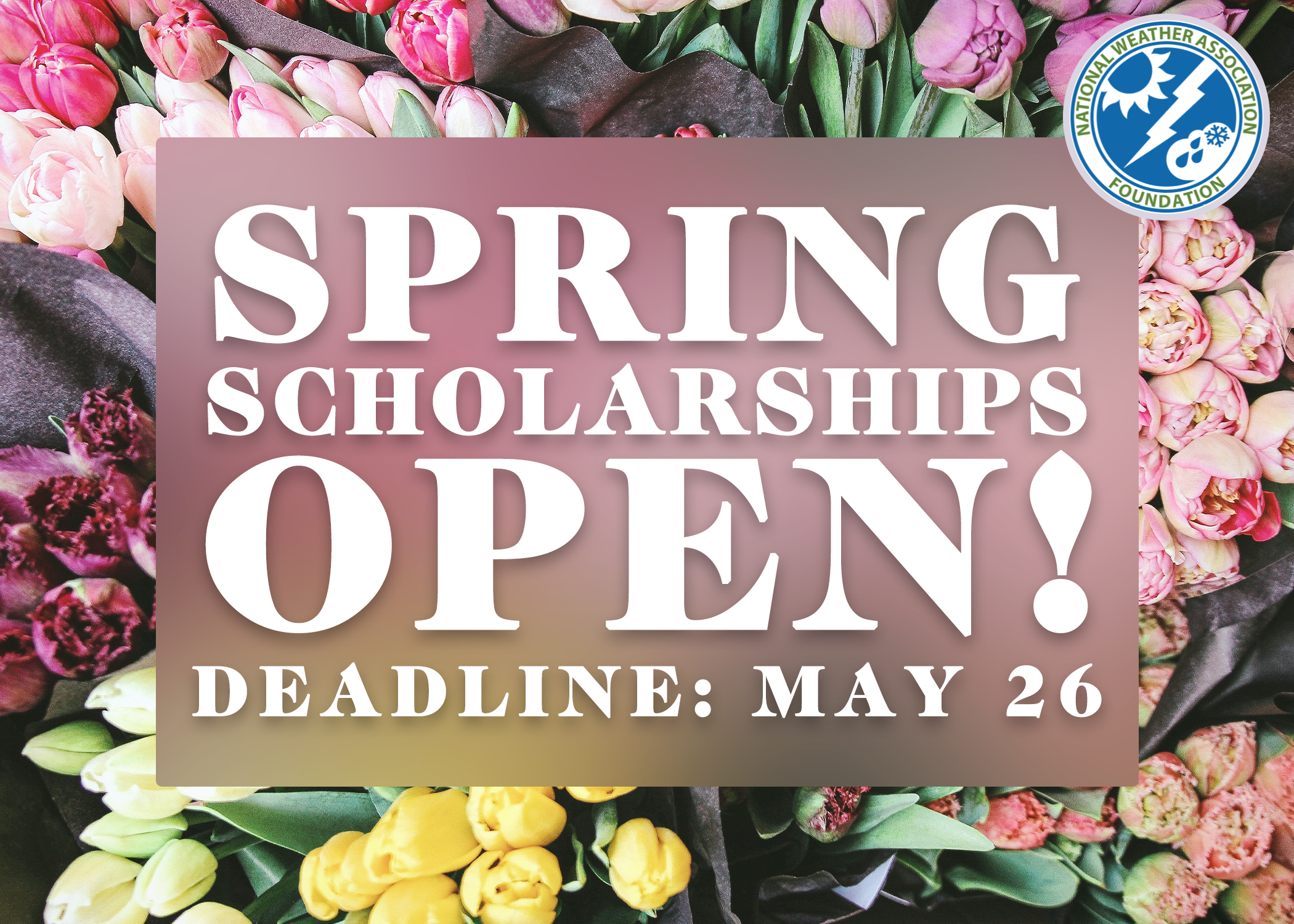
Click here to apply.
The Sol Hirsch Education Fund Grants for K-12 Teachers/Educators will close June 7, 2022.
- David Sankey Minority Scholarship - $1,000
- Dr. Roderick A. Scofield Scholarship - $1,000
- Ken Reeves Memorial Accuweather Undergraduate Scholarship – $1000
- Broadcast Meteorology Scholarship - $1,000
- Bob Glahn Scholarship In Statistical Meteorology - $2,500
- The David Freeman NWA Past President’s Fund - $1,000
- The NWAF Sol Hirsch Education Fund Grant - Four (4) Grants, $750 each
OPEN UNTIL MAY 26, 2022.
Scholarship Flyers.
Return to Top
Women's History Month
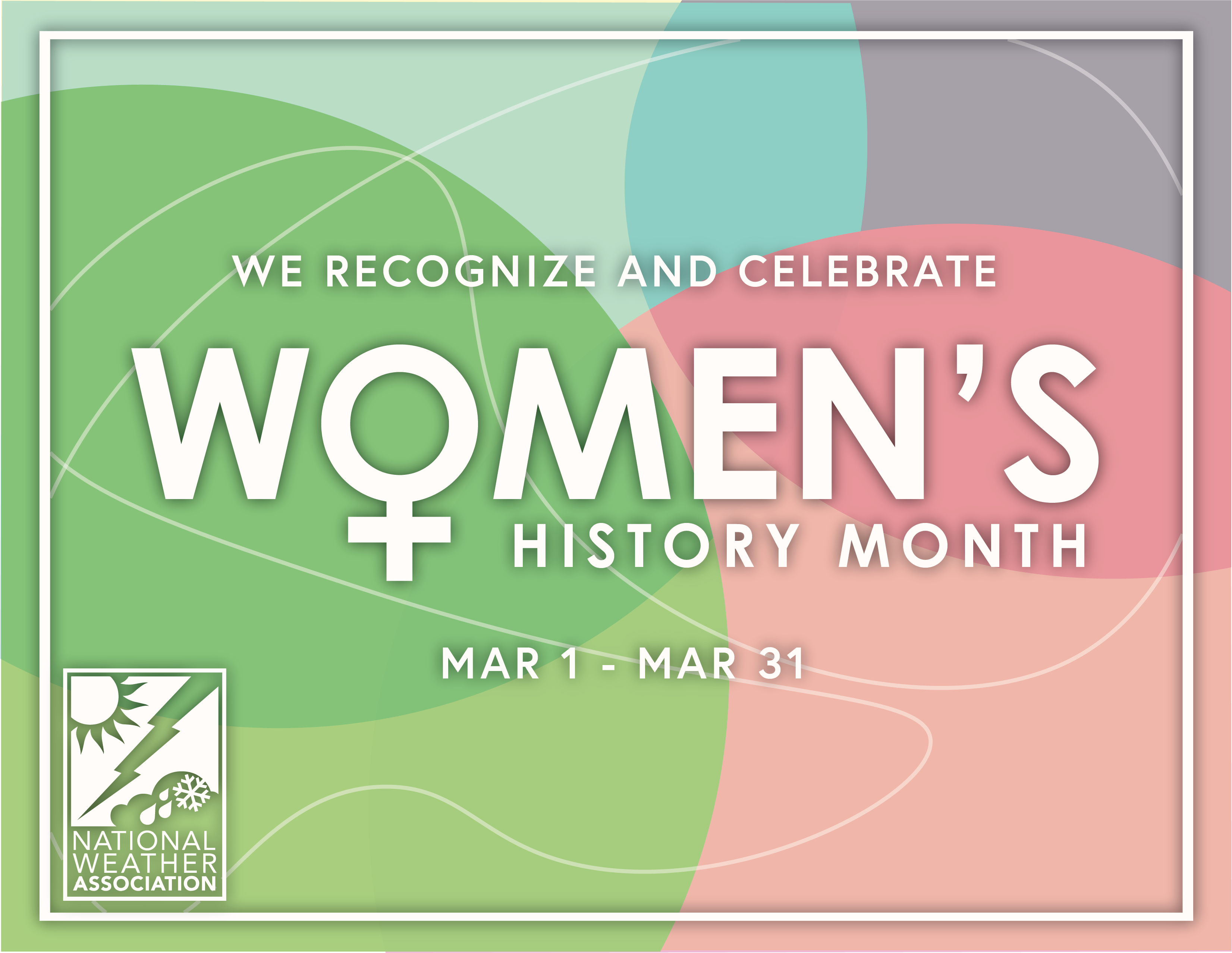
We salute all the women in our NWA family, thanks for advancing the weather enterprise.
Click here to learn more about Women's history month.
Return to Top
New JOM Articles
JOM: Analysis of Model Thermal Profile Forecasts Associated with Winter Mixed Precipitation within the United States Mid-Atlantic Region
Link to Article
Authors for this new JOM article are Andrew W. Ellis, Stephen J. Keighton, Stephanie E. Zick, Andrew S. Shearer, Casey E. Hockenbury and Anita Silverman.
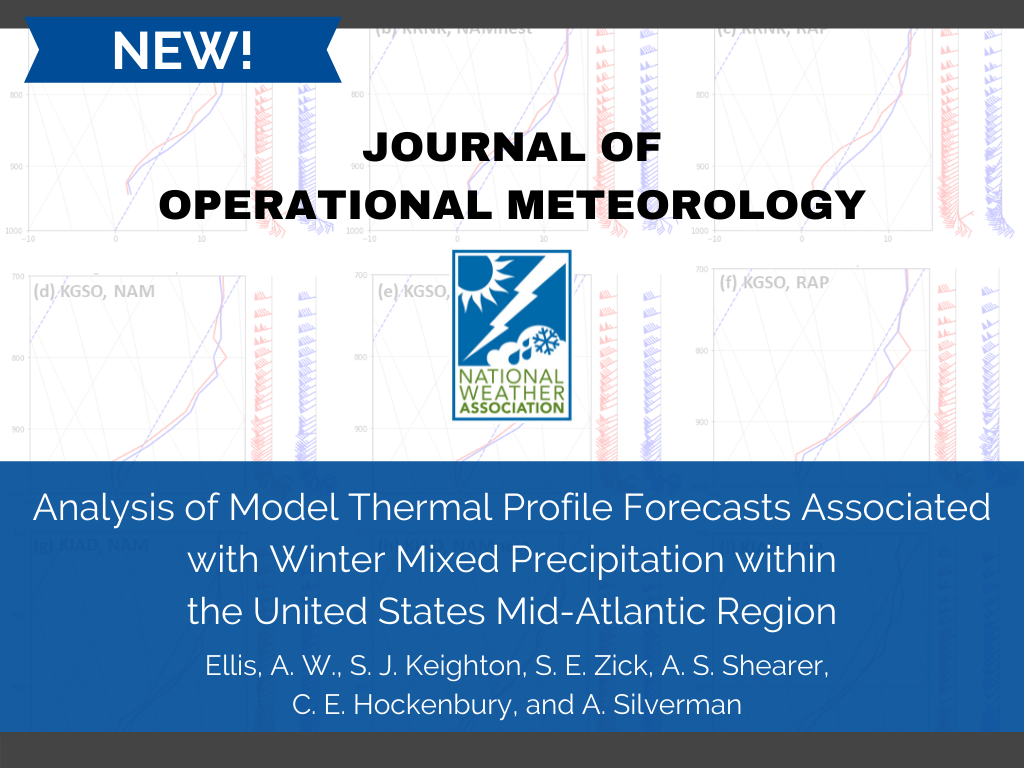
Abstract:
Winter mixed-precipitation events across the mid-Atlantic region of the United States from 2013–2014 through 2018–2019 were used to analyze common short-term model forecasts of vertical atmospheric thermal structure. Using saturated forecast soundings of the North American Mesoscale (NAM), higher-resolution nested NAM (NAMnest), and the Rapid Refresh models—corresponding with observed warm-nose precipitation events (WNPEs)—several thermal metrics formed the basis of the analysis of observed and forecast soundings, including Bourgouin positive and negative areas. While the three models accurately forecast the general thermal structure well during WNPEs, a warm bias is evident within each. Well forecast are maximum and minimum temperatures within the warm nose and surface-based cold layer, respectively, but the cold layer is commonly too thin for each of the models, and the warm nose is regularly too thick, particularly within NAM and NAMnest forecasts. Forecasts of a cold layer that is too shallow tend to coincide with observations of stronger synopticscale upward motion, a deeper cold surface-based layer, and a higher isentropic surface. Forecasts of a warm nose that is too thick tend to coincide with observations of weaker upward motion, a shallower cold surfacebased layer, and a lower isentropic surface across the region. Two-thirds of precipitation-type estimates from model soundings agreed with those derived from observed soundings, with the remaining third predominantly representing a warm bias in precipitation type.
JOM: Terrain Effects on the 13 April 2018 Mountainburg, Arkansas EF2 Tornado
Link to Article
Authors for this new JOM article are Matthew E. Anderson, Al Doug G. Schneider and Jeremy L. Buckles. David J. Bodine. Anthony E. Reinhart, Martin A. Satrio and Takashi Maruyama
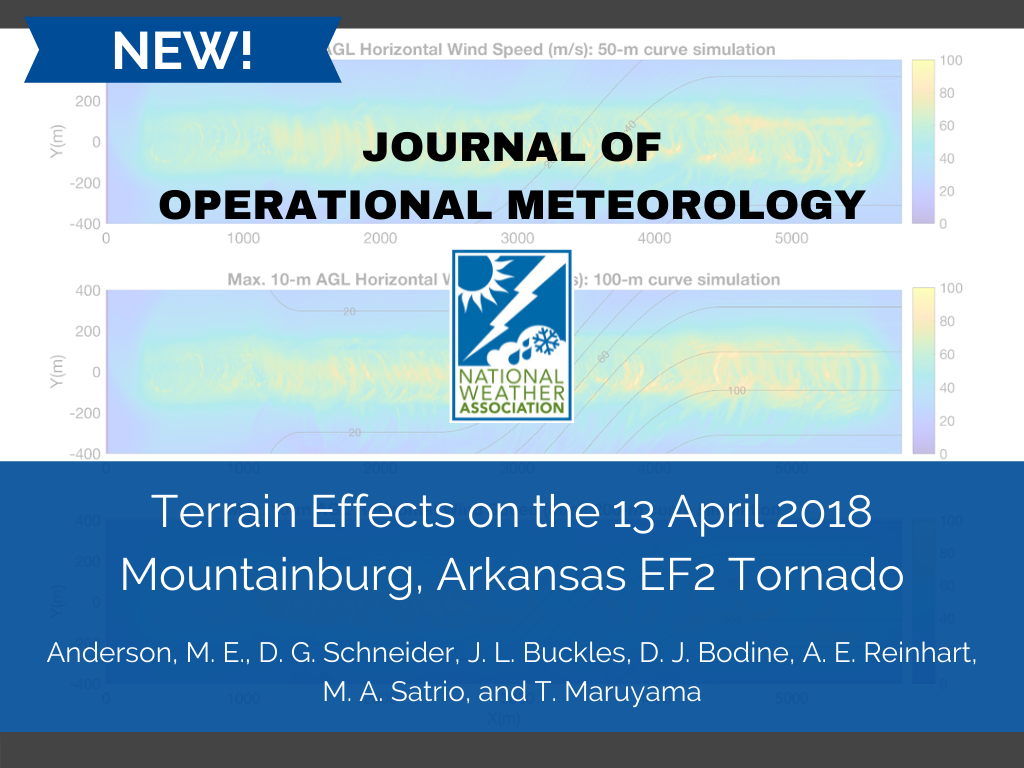
Abstract
Storm-scale interactions with rough terrain are complex. Terrain has been theorized to impact the strength of low-level mesocyclones. Surface roughness and modifications of the surrounding environment also may impact tornadogenesis or tornado intensity. The Mountainburg, Arkansas EF2 tornado on 13 April 2018 traveled along a path with minor variations in intensity and elevation throughout most of the nearly 19-km (11.8 mi) damage path as the storm moved along a river valley. A detailed damage survey showed that the tornado then made an abrupt ascent of more than 200 m (656 ft) in the last 2 km (1.2 mi) before dissipating. By examining model soundings and conducting a detailed terrain analysis, this study examines what role terrain may have had in channeling the momentum surge and enhancing the low-level vorticity to influence tornadogenesis. Other storm-scale factors are investigated to determine their potential impact on the demise of the tornado. The differential reflectivity column is studied to determine if the updraft was weakening. The relative position of the tornado and mesocyclone also are examined as the tornado ascended the terrain and dissipated to determine whether the change in elevation impacted the overall strength of the storm and to evaluate whether the storm was undergoing a traditional occlusion cycle. Finally, a large-eddy simulation model is used to explore physical changes in a tornado encountering terrain similar to the Mountainburg, Arkansas, tornado near its demise.
JOM: An Analysis of Northward-Moving Tornadoes within an Open Warm Sector Across Eastern Texas
Link to Article
Authors for this new JOM article are Nicholas L. Hampshire, Ted M. Ryan, and Chad Gravelle. 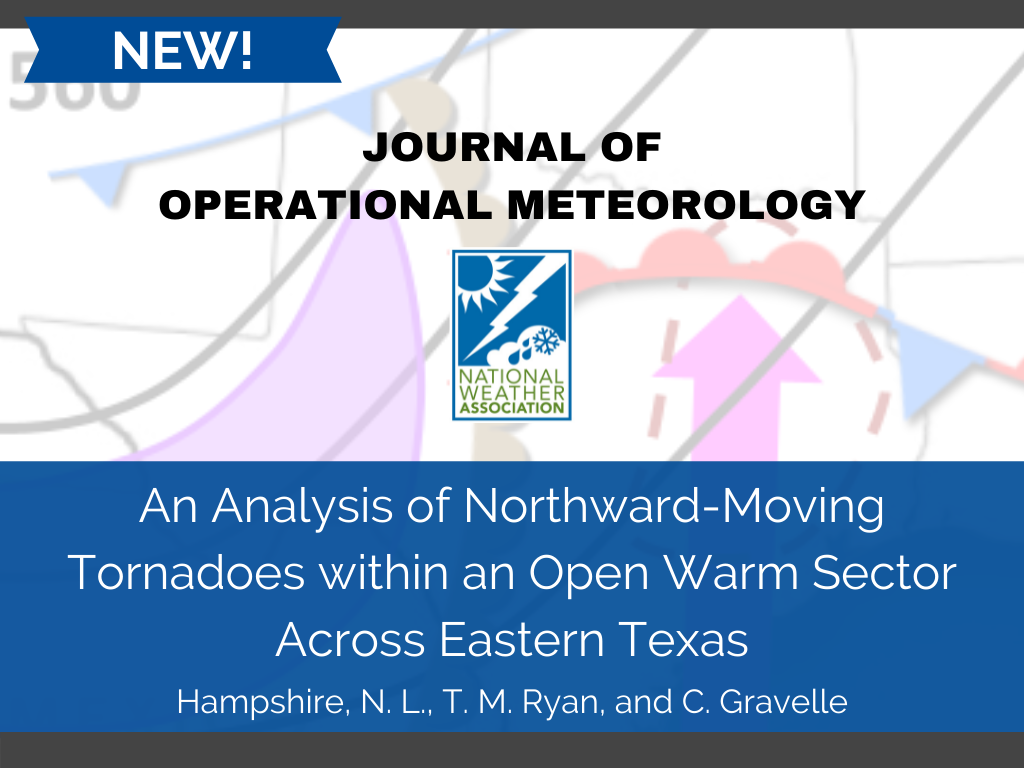
Abstract
Tornadoes in eastern Texas generally track to the east as predominant westerly upper flow acts on their parent storms. However, an examination of tornadoes from 2000 to 2018 finds that 22% of all tornadoes in the region move in much more northward directions. These tornadoes’ parent storms develop in the open warm sector prior to the arrival of a main linear forcing mechanism (e.g., front, dryline). In fact, some of the more notable tornado outbreaks in recent years across Texas have occurred from northward-moving thunderstorms. This bifurcation of storm/tornado motions is important to understand for forecasting, warning, and messaging of these events. The results show these tornadoes typically occur eastward of large, slow moving, mid to upper-level long-wave troughs and underneath the left quadrant exit-region of an upper-level jet streak. The composite pattern also shows that a low-level jet in eastern Texas, a surface low centered in west-central Texas, and a warm/stationary front extending northeast of the surface low were common for these events. The typical air mass was indicative of weak instability, low convective inhibition, and high shear. Radar analysis of the northerly moving, tornadic storms showed mesocyclonic circulations with smaller diameters and lower rotational shear when compared with tornadic storms that moved in an easterly direction.
Return to Top
NWA 2020 Financial Report
This is a summary of the NWA 2020 Finances. The NWA 990 IRS Tax Return provides more information and is available upon request.
Thanks to everyone who supports the NWA, its activities and mission.
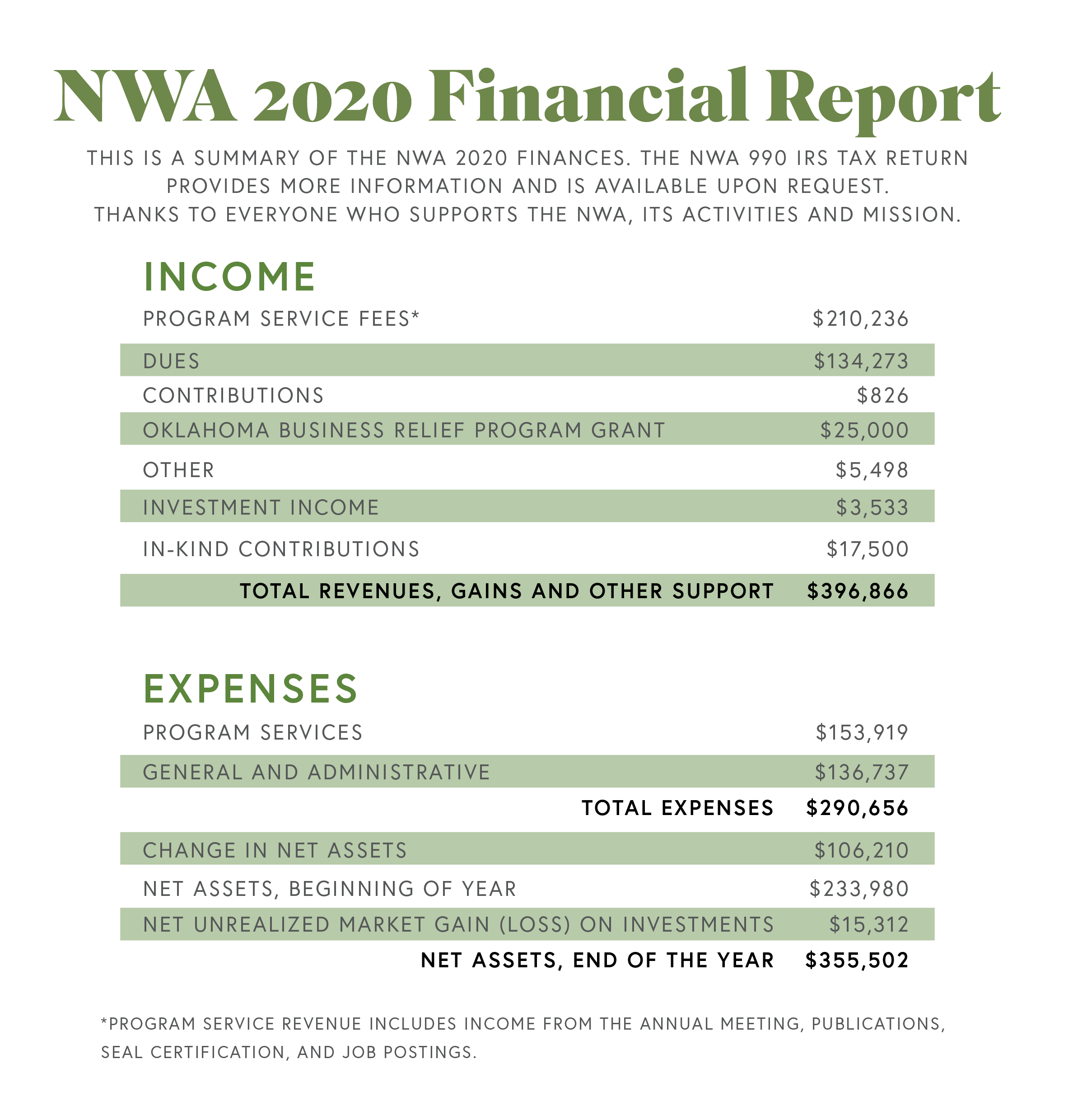
Return to Top
Annual Meeting Update
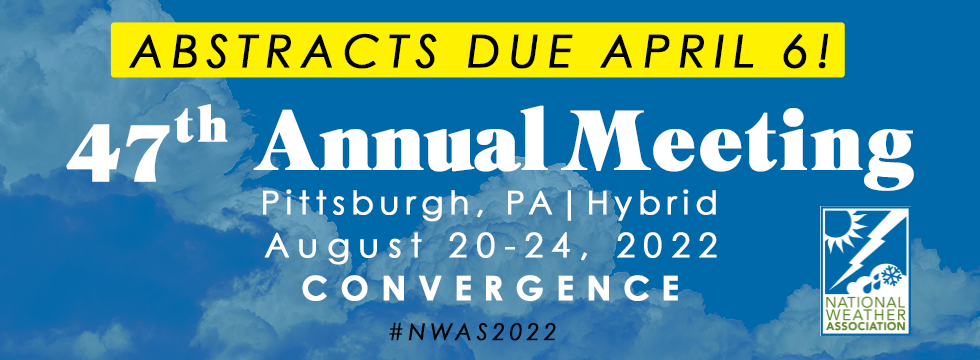
Did you hear? The NWA 2022 Hybrid Annual Meeting will be held in Pittsburgh, Pennsylvania, at the Sheraton Hotel at Station Square August 20-24. It will be a hybrid meeting, so you can join us in person or virtually.
Room prices are the government per diem rate valid for August 2022, currently $124 + tax. The hotel room block will open soon. Members will receive an email when the block opens.
Watch our website and future Newsletters for updates. Learn about the city from VisitPittsburgh.
Important Dates:
April 6: Abstracts Due by 11:59 PM CT
April 6: Event, Workshop and Session Proposals Due
August 20: Exhibitor Setup and Registration Desk Opens
August 21: Broadcast Meteorology Workshop and Student Session
August 22-24: General Sessions
Return to Top
Safe Place Selfie
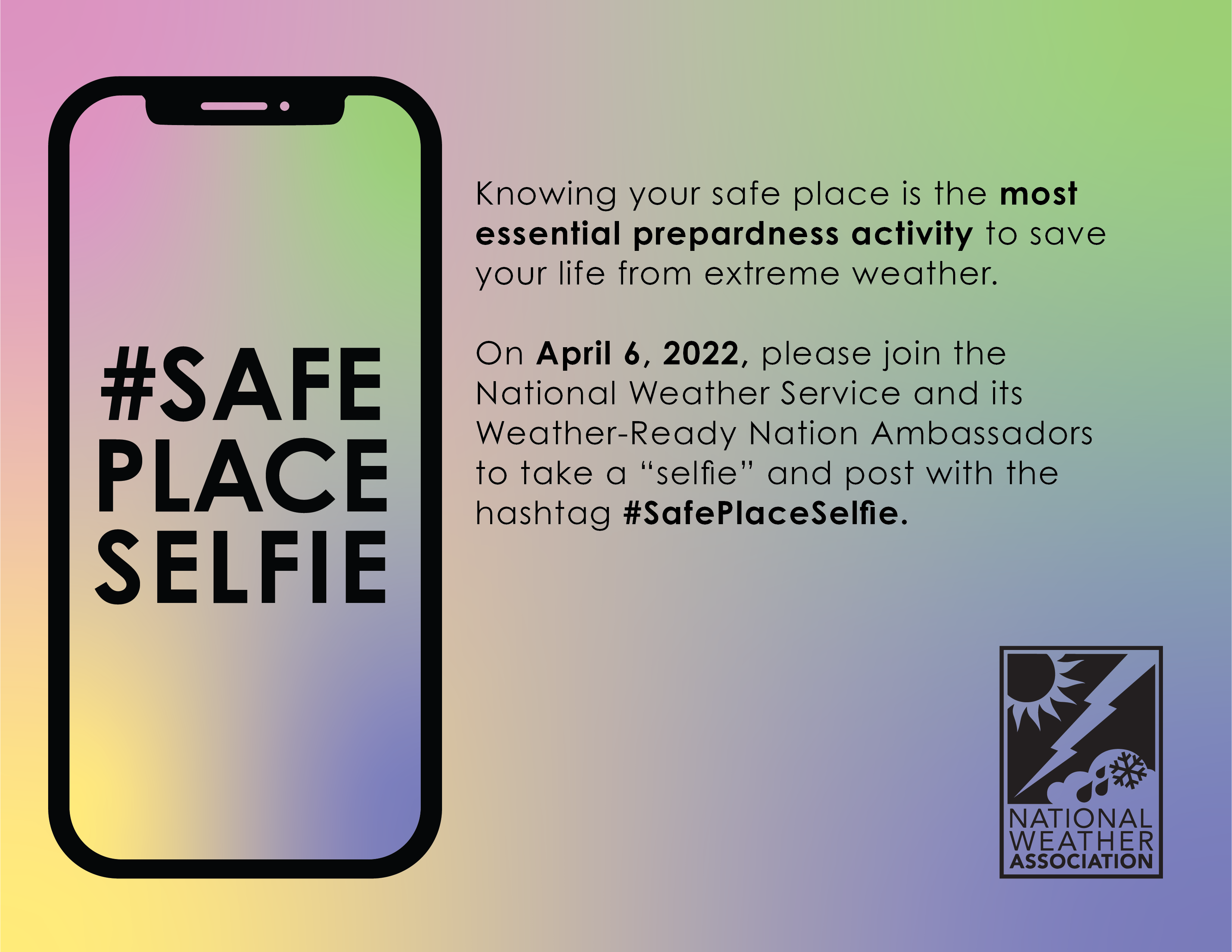
If there was one extreme weather preparedness action you want your loved ones to take, what would it be? For many, that one action is to know ahead of time where their safe place is located. On April 6, 2022, please join the National Weather Service and its Weather-Ready Nation AmbassadorsTM to take a selfie and post with the hashtag #SafePlaceSelfie.
One of the most essential preparedness actions anyone can do is to identify their safe locations from various extreme weather threats. Knowing where to go ahead of time can minimize hesitation and ensure your decisions are good ones even under great duress.
To encourage everyone to take some time and identify their safe places, we ask that you post a selfie photo using the hashtag #SafePlaceSelfie and challenge others to do the same by tagging them in your post -- other family members, friends, colleagues at school or work, or others in your social network. Imagine a “Weather-Ready Nation” where everyone knows where to go or where not to go, and when extreme weather is forecast, makes decisions to ensure their safety.
Learn more at the National Weather Service.
Return to Top
2021 Annual Meeting Student Presentation Awards
The NWA Professional Development Committee reviewed student presentations from the 2021 Hybrid Annual Meeting and selected the presentation award winners.
Students indicated their interest to participate in the competition when submitting their abstracts. Undergraduate and graduate presentations were judged separately. See the list of winners below.
If you are a student submitting an abstract for the NWA 2022 Hybrid Annual Meeting, you can tell us if you want to participate in the competition this year on the abstract submission form.
Thank you to the NWA Foundation for funding the cash prizes and to the NWA for providing complimentary memberships for winners.
Graduate Oral Presentation
Joseph Trujillo-Falcon: Co-Producing Next-Generation Warnings: A National Survey of Broadcast Meteorologists.
Undergraduate Oral Presentation
Jacob Morse: Evaluating Graphics Used to Communicate Uncertainty and Probabilistic Winter Weather Information
Graduate Poster:
1) #40 Julie Cummingham: Orographic Spillover and Invigoration of Lake-Effect Precipitation Downwind of Lake Ontario
2) #147 Matthew Seymour: Initial & Boundary Condition Uncertainy's Role in Predicting Precipitation Type in Complex Terrain
3) #51 Sean Ernst: Cracking the TORFF Code: Testing an AI Coding Scheme on Broadcaster Coverage of TORFF Events
Undergraduate Poster:
1) #164 David Topping: Assessment of Meteorological Phenomena that Impact Winter Precipitation Type in the Mid-Atlantic
2) #33 Alex Cheung - The Radius of Utility for Identifying Snow Squalls with Radar
3) #115 Shannon McCloskey - Exploring How Early Season Tropical Cyclones Indicate Full Season Activity
Weather-Ready Nation Spring Campaign
NOAA’s National Weather Service (NWS) wants you to be prepared for hazardous weather year-round. The aim of the National Seasonal Safety Campaign is to build a Weather-Ready Nation, one that is prepared for extreme weather, water, and climate events. Read more here.
Help us share safety information about spring hazards!
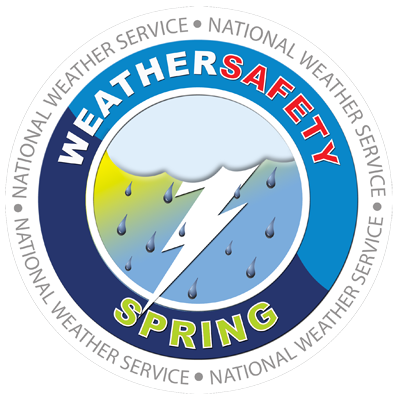
Return to Top
Jobs Corner

We update the job postings as they arrive, and they've been arriving more frequently.
Check out the newest job postings or submit a job posting here.
Return to Top
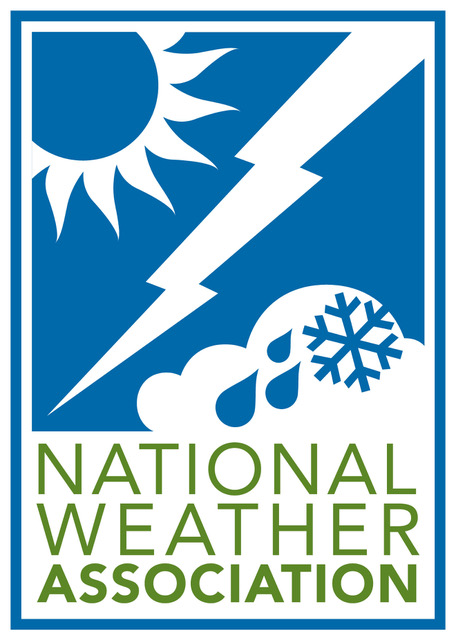
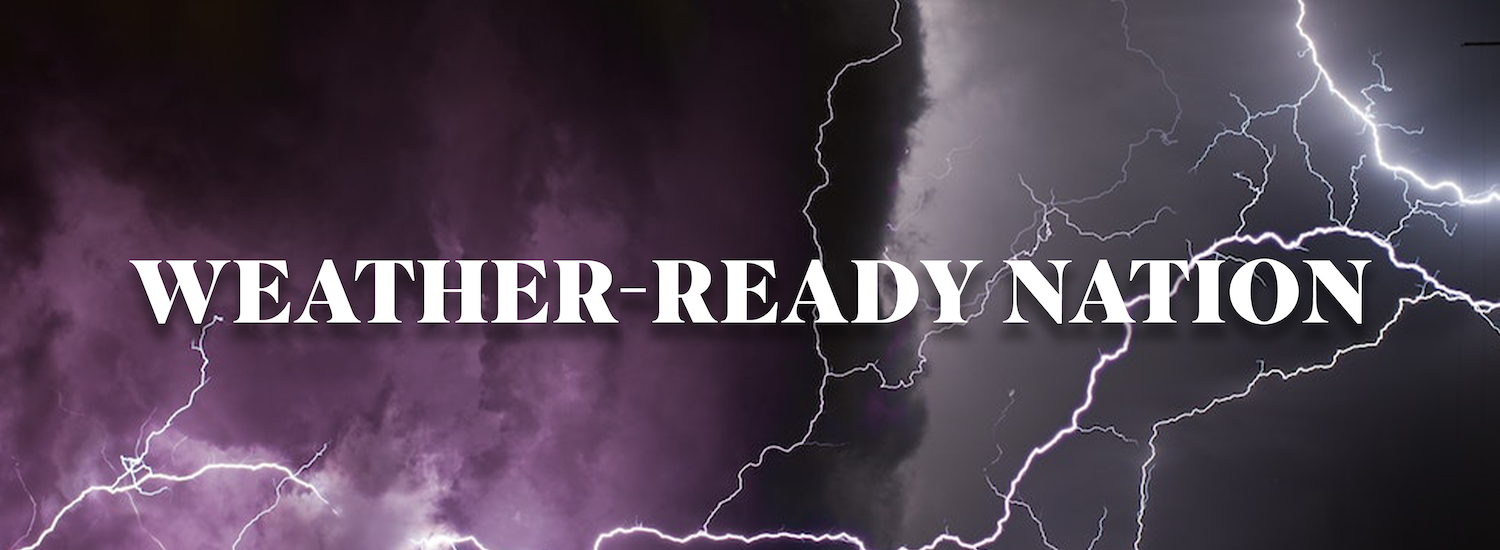
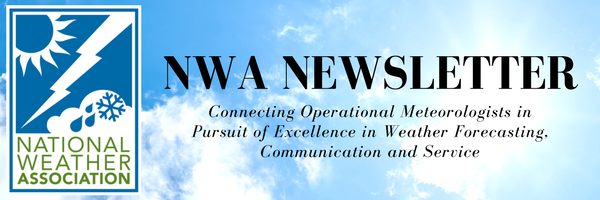
 I mentioned in my January message that I am a social scientist. I thought I would use the president’s message this month and next to talk a little bit more about social science. Coming up first--what a social scientist is and why meteorologists should care.
I mentioned in my January message that I am a social scientist. I thought I would use the president’s message this month and next to talk a little bit more about social science. Coming up first--what a social scientist is and why meteorologists should care.














